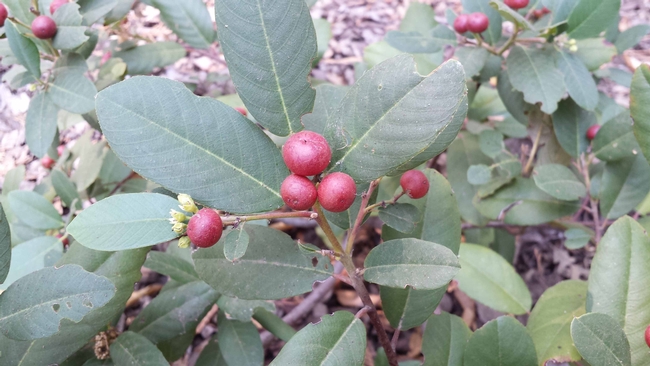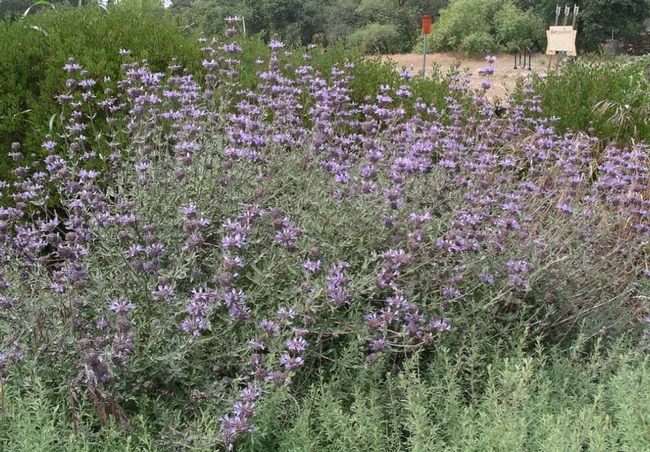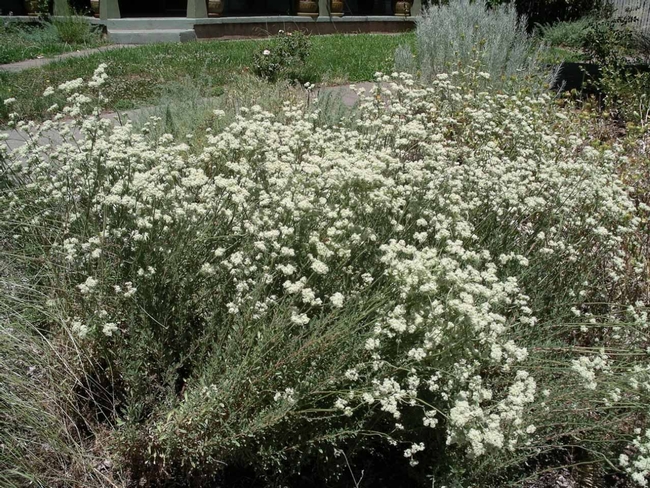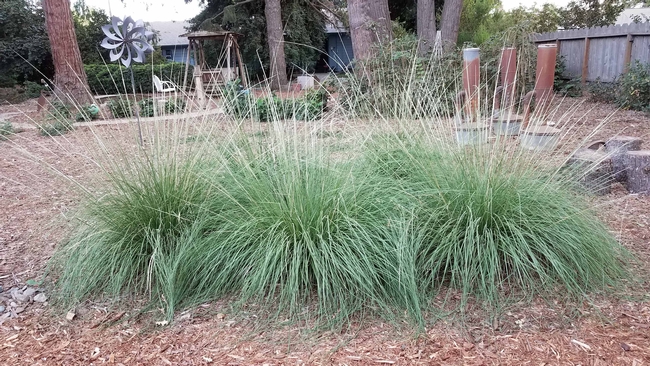By Cindy Weiner, UC Master Gardener of Butte Count, November 16, 2018
Coffeeberry berries by J. Alosi
Eve Werner, landscape architect and owner of Eve's Garden Design, likes to use coffeeberry (Frangula californica) as a screen, background or hedgerow. Its blackish berries resemble coffee beans and are very attractive to birds. This evergreen shrub can grow to six to ten feet tall and wide although the cultivar ‘Eve Case' is smaller, only reaching about five feet. It is native to Butte County and grows in Upper Bidwell Park. Werner says, “This adaptable plant thrives in full sun to shade with monthly to no summer irrigation.”
Cleveland sage by Cindy Weiner
Jason Mills, owner of Ecological Solutions, suggests, “If you're looking for an evergreen shrub, why not try giving the local and less commonly used hollyleaf redberry (Rhamnus ilicifolia) a shot?” Hollyleaf redberry has small serrated leaves, resembling holly. It grows best in full sun or partial shade. The flowers are small and inconspicuous but develop into beautiful red fruit, which provide food for birds. It grows five to ten feet tall and needs no summer water once established.
California buckwheat by Cindy Weiner
Mills and Whittlesey like using the large perennial bunch grass deergrass (Muhlenbergia rigens). Whittlesey says, “I use deergrass to bring a rhythm and flow into a garden. When in flower in later summer, it has a stronger architectural form which holds through the winter months. It combines readily in front of larger shrubs or as a foil for small shrubs and perennials.” Deergrass forms a dense clump to 4 feet tall and wide in full sun or light shade.
Growing natives can be easy if you give careful consideration to the plant's cultural requirements. Mills states, “In the end it all comes down to putting the right plant in the right spot. We look to nature and try to match the conditions (substrate, moisture, light exposure) found in remaining intact habitats when we create our designs and implement native landscapes. When you get it right, you'll know, as they thrive for years to come with little to no water and maintenance and provide crucial resources for wildlife along the way.”



